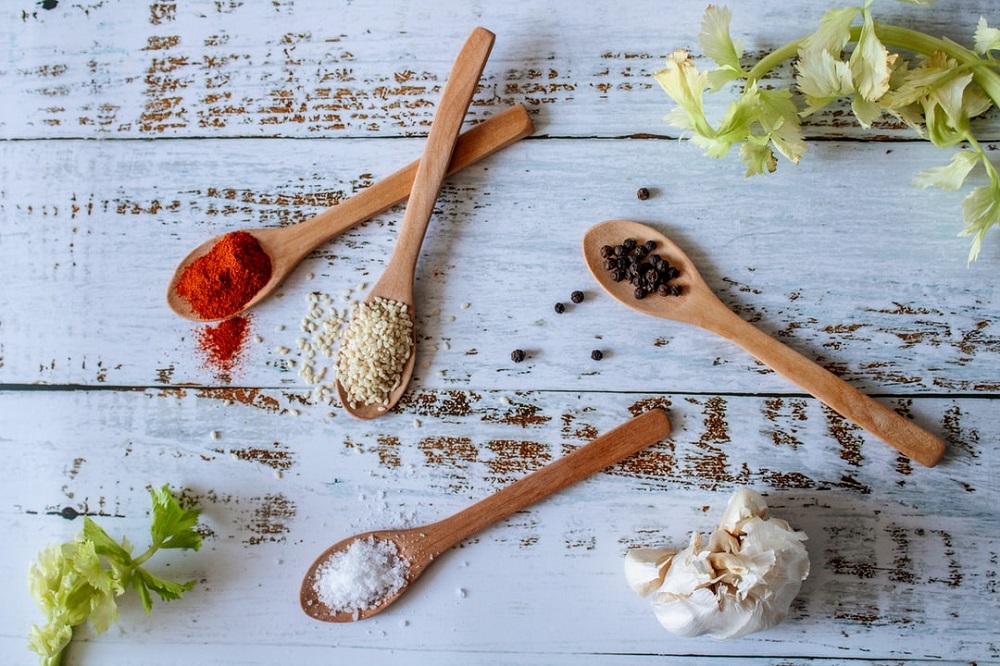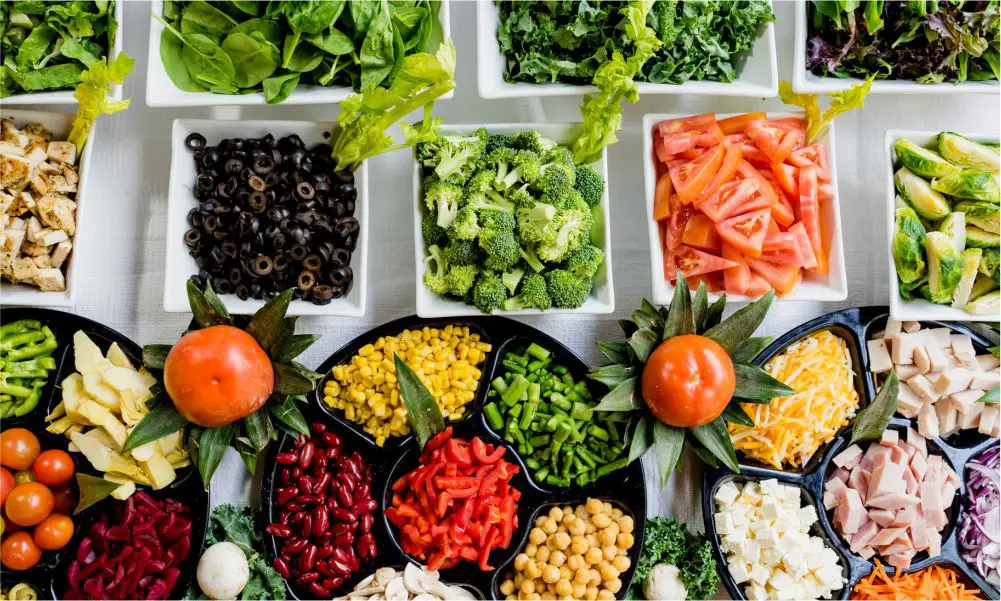
You Won’t Believe the Benefits of These Common Spices
The use of herbs and spices dates back to our ancestors. It’s always amazing how they were able to feed brilliantly back in times when civilization wasn’t fully in existence. They gain such mastery over plants and herbs, so much so that their health is always apt for their flourishing. It is said that garlic and onions were in use 4,500 years ago, and specified spices were used in preserving foods before technology came into place.
Herbs and spices are plant-sourced substances used for their fragrance, flavor, or medical attributes. In a botanical sense, a “herb” is an herbaceous plant that doesn’t have a woody stem and has a low lifespan, especially during the winter. There are, however, very common spices with great health benefits.
Below are a few of them and more ways they could be used in response to their health properties:
Common Spices and Their Health Benefits
1. Turmeric
Turmeric is a very common spice with vast, unthinkable health benefits. This spice is an Indian plant from the ginger family. It contains a color pigment called curcumin, which is vastly responsible for its bright hue and health benefits. The health benefits include the prevention of type 2 diabetes and helping fight inflammation in the body.
More benefits of this common spice have been in use for thousands of years as a medical procedure for treating a variety of ailments.
Some examples of such are joint pain, diabetes, arthritis, digestive mishaps, and cancer.
More Ways to Use Turmeric
This vibrant spice can be used in coloring curry powders, butter, mustards, sauces, cheese, grains, or smoothies. It can also be used in the preparation of teas and golden milk. In addition to their anti-inflammatory properties, they also contain strong antioxidant substances that are good for the skin. Turmeric gives the skin an extra glow and can be used as a face mask.
Large consumption of turmeric supplements is, however, not advisable as they can notably spike the level of urinary oxalate, leading to a high chance of kidney stone formation. Also, when being used as face masks, due to the high color pigment in turmeric, they are most likely to leave a stain on the skin if applied overnight. This could be easily taken care of by washing the face with milk.
2. Black Pepper
Black pepper is especially my favorite. It has an intense spicy flavor and leaves your meal surprisingly aromatic.
One of the benefits of this common spice is that it helps the digestive system secrete more nutrients from foods eaten. Even more, it has been discovered that black pepper has anti-tumor and anti-mutagenic properties. This means that it helps fight against genetic mutations. How interesting!
It also has a protective antitoxin that protects the body against cell damage. Not only that, it hastens the absorption of specific drugs.
More Ways to Use Black Pepper
This grounded spice can be used in the supreme garnishing of soups, spiking of salads, and flavoring of meats, fish, pasta, vegetables, and more.
Don’t be scared to add a little sprinkle to your sauce dips, eggs, porridge, pepper soups, of course, and fruits (avocado, pumpkins, etc.). It’s, in fact, a very good mix with turmeric.
3. Nutmeg
Nutmeg is also a very common spice with interesting health benefits. It’s a seed-derived spice known for its intriguing scent and warm taste. It’s mostly used to add flavor to various varieties of baked foods, puddings, meats, sausages, vegetables, beverages, and sauces.
One of the benefits of this common spice is that it helps a great deal in fighting germs and cavities with its antibacterial properties. In addition to these great facts, nutmegs also contain anti-inflammatory components that can stop the growth of cancer tumours.
Nutmeg is indeed very interesting, but an overdose of it could become a hallucinogen, and for this very reason, it’s currently banned in Saudi Arabia.
More Ways to Use Nutmeg
Nutmeg sure does make coffee taste great—just a tint of it, too, in the teas, hot cocoa, and warm milk. They could also serve well in seasoned beverages, with just a little sprinkling over oats and cereals, and sure in baked goods too.
4. Paprika
Do not fret! It’s the common powdered pepper. Paprika is of the capsicum family of peppers. It includes a vast variety of peppers, such as red hot peppers, bell peppers, green peppers, etc.
One of the benefits of this common spice is that it’s recognized as an antioxidant agent which is very good for the body. Although it comes with a spiking punch, just a teaspoon contains 37% of the daily recommended intake of Vitamin A and Iron.
Other health benefits include improved immunity, improved cholesterol levels, reduced blood sugars, reduced cancer risks, improved eye health, and also serving as a stimulant against depression.
More Ways to Use Paprika
Roses are red; paprika(s) are redder. All I’m saying is that it’s not that bad. I understand a lot of people don’t really like this particular spice, but really, it’s a healthy one. It doesn’t have to be consumed at high spike levels. Just a tint, at least once in a while, is highly recommended and would be much appreciated by your body.
It’s most enjoyed in soups, stews, and the garnishing of foods. It is also used in making marinades and spicy sauces.
5. Curry Powder
This is the most common spice that’s both healthy and handy in several ways. It’s made from a dashing mix of selected herbs and spices, including the well-known turmeric.
One of the benefits of this common spice is that it contains a very powerful anti-inflammatory compound and it’s at least 50 times much more effective than Vitamin C and E.
It also has the potency to restrain specific breast cancer cells, fight against stomach cancers and Alzheimer’s disease (a mental disorder), strengthen the bones, and aid digestion.
More Ways to Use Curry Powder
Curry is a very good mix for marinating meats and fish, especially before roasting. It also adds a great flavor to stews, vegetables, spinach, sauce, porridges, and coconut milk too.
6. Ginger
Ginger is a rhizome herb from the Zingiberaceae family. It is very common and known for its express medical assistance. One of the benefits of this common spice is its richness in anti-inflammatory and antioxidant properties. Also, it serves as a great aid in the treatment of various ailments.
These include bloating, nausea, chronic indigestions, weight reduction, morning sickness, coughing, cold congestion, post-surgery nausea, and workout-induced soreness.
Ginger is highly rich in Gingerol – a chemical that is known to treat inflammation and restrict nerve pathways that process pain. Traditionally, ginger is used as a remedy for general pain relievers, which include menstrual aches.
More Ways to Use Ginger
There’s a vastness attributed to the use of ginger, diced, dried, or extracts, surprisingly even in cosmetics. This particular herb could be used in whatever quantity and almost in every dish. This includes a wide variety of teas, sauces, beverages, baked goods, and dishes.
For stomach upsets, pains, and weight reduction, a good mix in warm water would work fine. For cough and cold congestion, a tint of lemon and honey could go a long way.
7. Cinnamon
Cinnamon is another very common spice with amazing health benefits. This spice is a dried aromatic bark that comes in stick rolls or powder. Similarly to Nutmeg, they are fragrance sticks used for the flavoring of dishes and baked goods.
One of the benefits of this common spice includes a range of digestive challenges and diabetic issues. They’re used in the management of blood sugar and cholesterol levels. They also reduce tummy fat (when added to food daily) and improve glucose cell metabolism.
It also has antioxidant, antifungal, and antibacterial properties that make it a handy treatment for the skin.
More Ways to Use Cinnamon
For skin treatment, cinnamon could be used for face masking when mixed with honey or yogurt. This healthy spice goes well with most dishes.
A little sprinkling of cinnamon over plain yogurt, oatmeal, beverages, and coffee (while brewing) gives it a unique tint of awesomeness.
Conclusion
There are a vast variety of great herbs and spices that are in use both for medical purposes and as amazing additions to dishes. These are only a few common spices with extreme health properties and unique flavorings for you.
I hope you have fun trying them out. Tell me in the comments section when you do.


